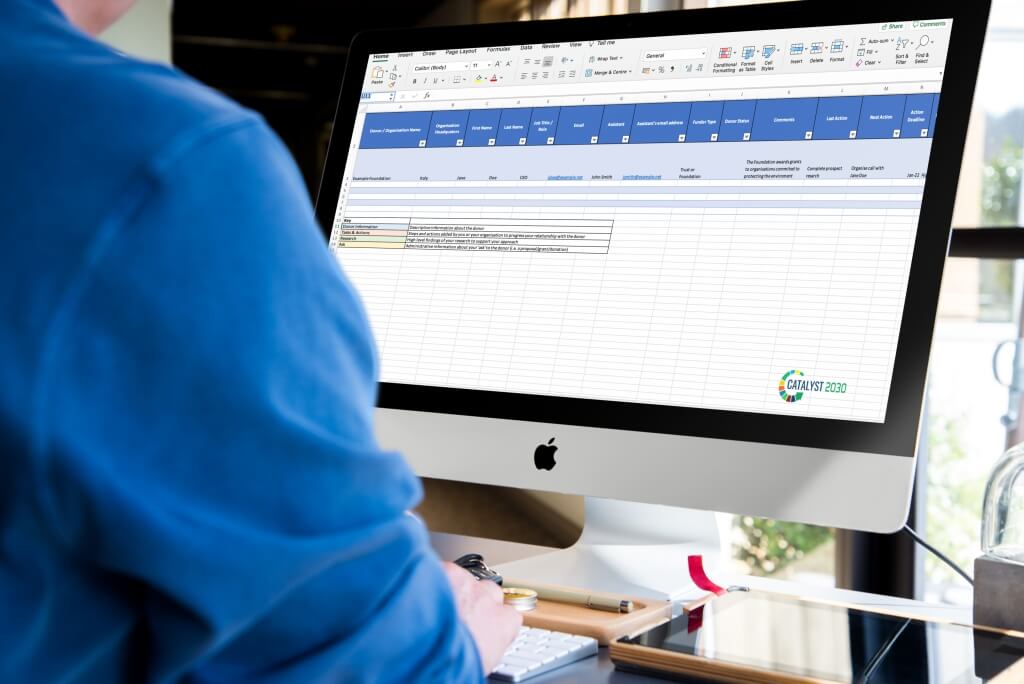Managing your current and prospective donors is essential to the financial health of your organisation. An up-to-date and systematic process to keep track of where you are in the donor and prospect lifecycle is crucial for any successful fundraising strategy. Here is a basic guide to help you create and manage your donor pipeline.
What is a donor pipeline?
Your donor pipeline should provide you with an overview of all prospective funders and current donors you are approaching to fund your work. It can help you focus your limited time and resources and make sense of the overwhelming donor landscape. Managed correctly, it will help you to your relationships, build stronger partnerships and better enable you to approach potential partners who are most aligned to your work and mission.
More advanced fundraising teams will likely store the donor pipeline in a Customer Relationship Management (CRM) database, such as Salesforce or Raiser’s Edge. Smaller organisations can effectively track the pipeline in an Excel spreadsheet. Catalyst 2030 has created an Excel template to support you.
What is the difference between a donor and a prospect?
However, before going any further, it is useful to explain the difference between a donor and a prospect, as we will be using these terms repeatedly in this guide.
A donor is a funder that is actively giving to, or has given to, your organisation.
A prospect is a funder who has not given to your organisation but you have identified them as a potential funder of your work.
How do I use the Catalyst 2030 donor pipeline template?
The donor pipeline template has been split into four key sections to help you to track your donors and asks, that is, proposals and grants. These four sections and their content are explained below:
1. Donor Information
This section is designed to highlight descriptive information about the donor – where they are based, who your main point of contact is (or could be), what ‘type’ of funder they are (Foundation, Corporate, Government, Individual, or for example, Impact Fund), and what the status of your relationship is. This section and the statuses are used to indicate:
- Cold prospect: you have no connection to this prospect but have added them to your pipeline as someone you may wish to contact.
- Warm prospect: you have a connection to this prospect and have spoken with them about your work.
- Donor: they are a current donor – they are already funding your work.
- Revisit prospect: you have identified this prospect and/or you may have also been connected with them but it is not an appropriate time to develop the relationship. You use this status when you would like to contact them at a later date when you may better align.
- Disqualified: after further research or discussion, you have decided that this prospect or donor will not give to you in the future.
2. Tasks and actions
This section highlights the steps and actions taken to progress your organisation’s relationship with the donor. This may indicate whether you have to conduct ‘prospect research’ (research into the alignment of a prospect with your work), or if you need to schedule a meeting with the donor or prospect or when a report may be due.
3. Research
This section provides high-level findings of your prospect research to support and guide your approach.
4. Ask
This section includes administrative information about your ‘ask’ to the donor. An ‘ask’ refers to a verbal ask, submitted proposal or a grant/donation that is pending or received. A crucial component of this section is the ‘Status’ column and the seven stages that you can choose in the dropdown. These are:
- Identify: this status is used once you have identified an opportunity (also known as an ‘ask’) with a prospect or donor. It is important that you log this information so you are aware of all of the potential income sources you are approaching.
- Research: this status is used to indicate that you are doing further research on the prospect or donor to better understand how you might collaborate.
- Cultivate: this status indicates that you are in conversation with the prospect or donor to cultivate a relationship and lay the foundations to ask for funding and partnership.
- Ask: this status indicates you have asked or are ready to make an ask of the prospect or donor for funding.
- Close: this status indicates that the ask has been confirmed, or closed, and that you may need to follow up or prompt or that you are expecting to receive the funding.
- Thank: this status is used once you receive the funding in your bank. It is now time to thank the donor for their partnership and write a receipt for their donation.
- Steward: once you have thanked the donor, this status indicates that you are in a current partnership with the donor and you are stewarding the relationship with them. When a donor is in this phase, it is great to think of ways to build your relationship and further collaborate with them, as this often paves the way for future funding opportunities.
What now?
Download the donor pipeline template and start adding your donors and prospects. This tool has been designed as a starting point, so edit and amend it to fit your organisational needs. We hope that this has given you some food for thought to help kickstart and guide your fundraising strategy. If you have any feedback regarding the tool, let us know via the Catalyst 2030 contact form.
Stay tuned to the Catalyst 2030 Fundraising Resources page for more tips and ideas to help guide your fundraising strategy.


